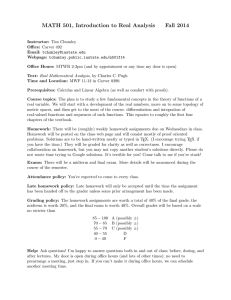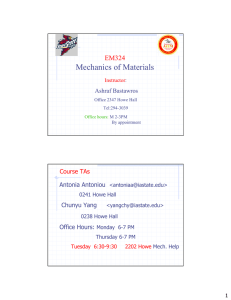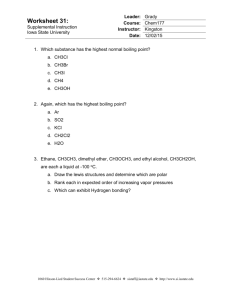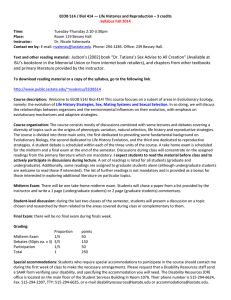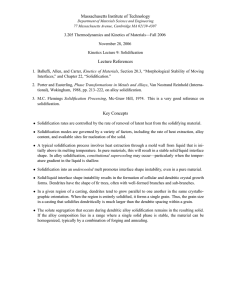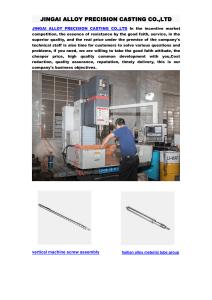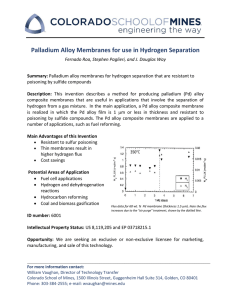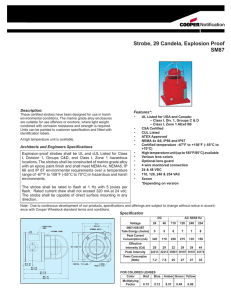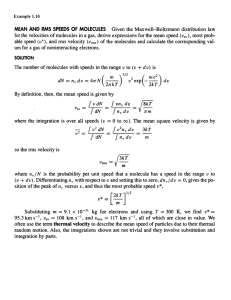MatE271 Introduction to Materials Science and Engineering Syllabus i.e.
advertisement
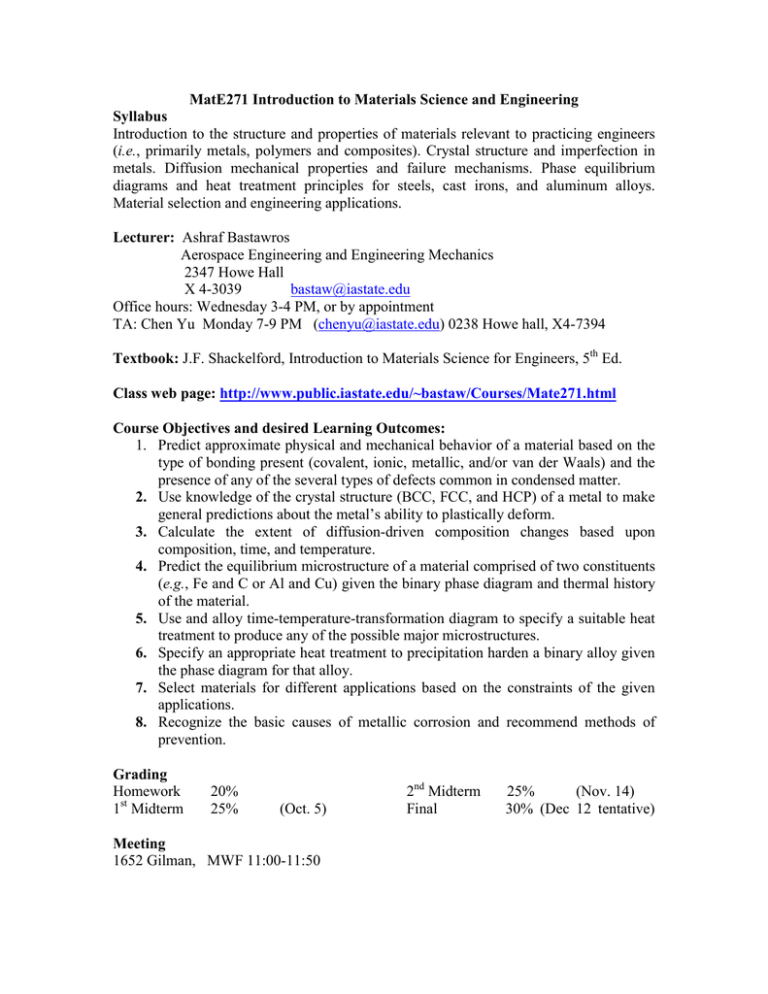
MatE271 Introduction to Materials Science and Engineering Syllabus Introduction to the structure and properties of materials relevant to practicing engineers (i.e., primarily metals, polymers and composites). Crystal structure and imperfection in metals. Diffusion mechanical properties and failure mechanisms. Phase equilibrium diagrams and heat treatment principles for steels, cast irons, and aluminum alloys. Material selection and engineering applications. Lecturer: Ashraf Bastawros Aerospace Engineering and Engineering Mechanics 2347 Howe Hall X 4-3039 bastaw@iastate.edu Office hours: Wednesday 3-4 PM, or by appointment TA: Chen Yu Monday 7-9 PM (chenyu@iastate.edu) 0238 Howe hall, X4-7394 Textbook: J.F. Shackelford, Introduction to Materials Science for Engineers, 5th Ed. Class web page: http://www.public.iastate.edu/~bastaw/Courses/Mate271.html Course Objectives and desired Learning Outcomes: 1. Predict approximate physical and mechanical behavior of a material based on the type of bonding present (covalent, ionic, metallic, and/or van der Waals) and the presence of any of the several types of defects common in condensed matter. 2. Use knowledge of the crystal structure (BCC, FCC, and HCP) of a metal to make general predictions about the metal’s ability to plastically deform. 3. Calculate the extent of diffusion-driven composition changes based upon composition, time, and temperature. 4. Predict the equilibrium microstructure of a material comprised of two constituents (e.g., Fe and C or Al and Cu) given the binary phase diagram and thermal history of the material. 5. Use and alloy time-temperature-transformation diagram to specify a suitable heat treatment to produce any of the possible major microstructures. 6. Specify an appropriate heat treatment to precipitation harden a binary alloy given the phase diagram for that alloy. 7. Select materials for different applications based on the constraints of the given applications. 8. Recognize the basic causes of metallic corrosion and recommend methods of prevention. Grading Homework 1st Midterm 20% 25% (Oct. 5) Meeting 1652 Gilman, MWF 11:00-11:50 2nd Midterm Final 25% (Nov. 14) 30% (Dec 12 tentative)
